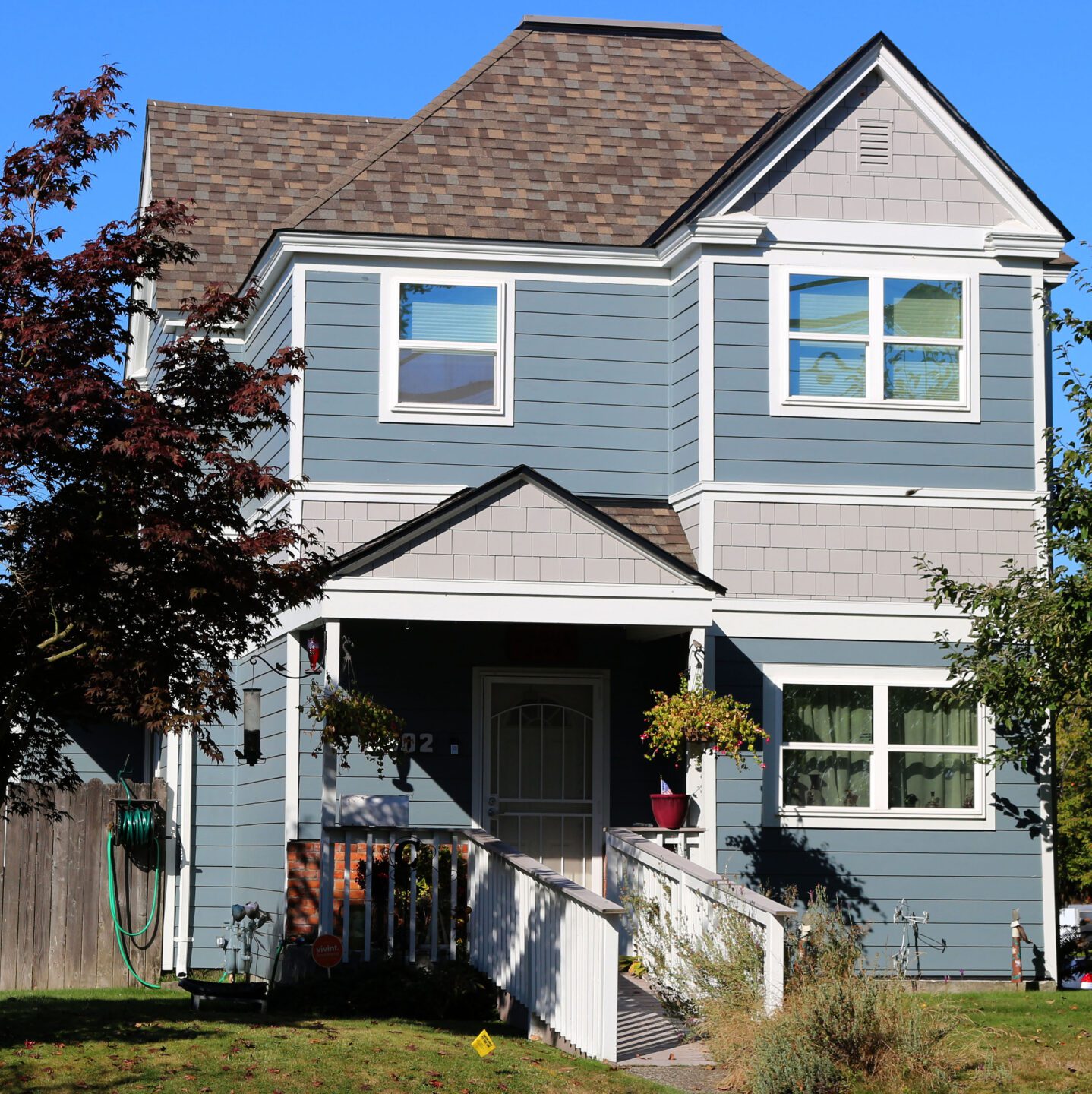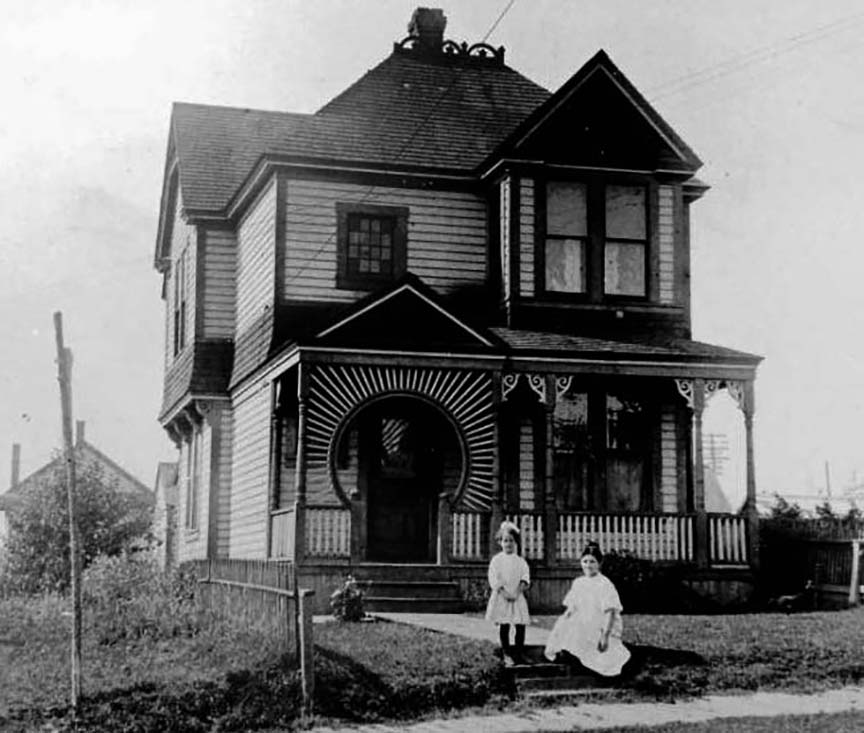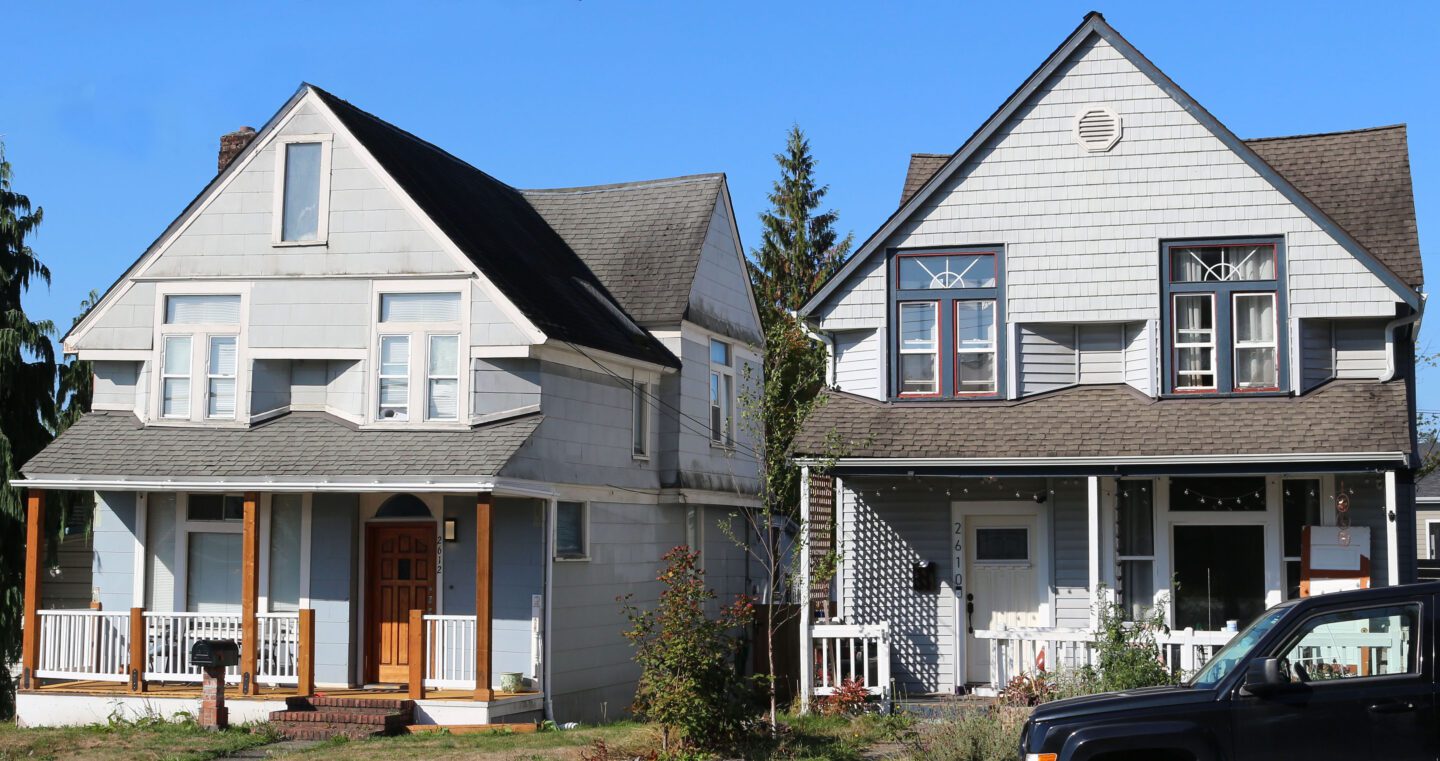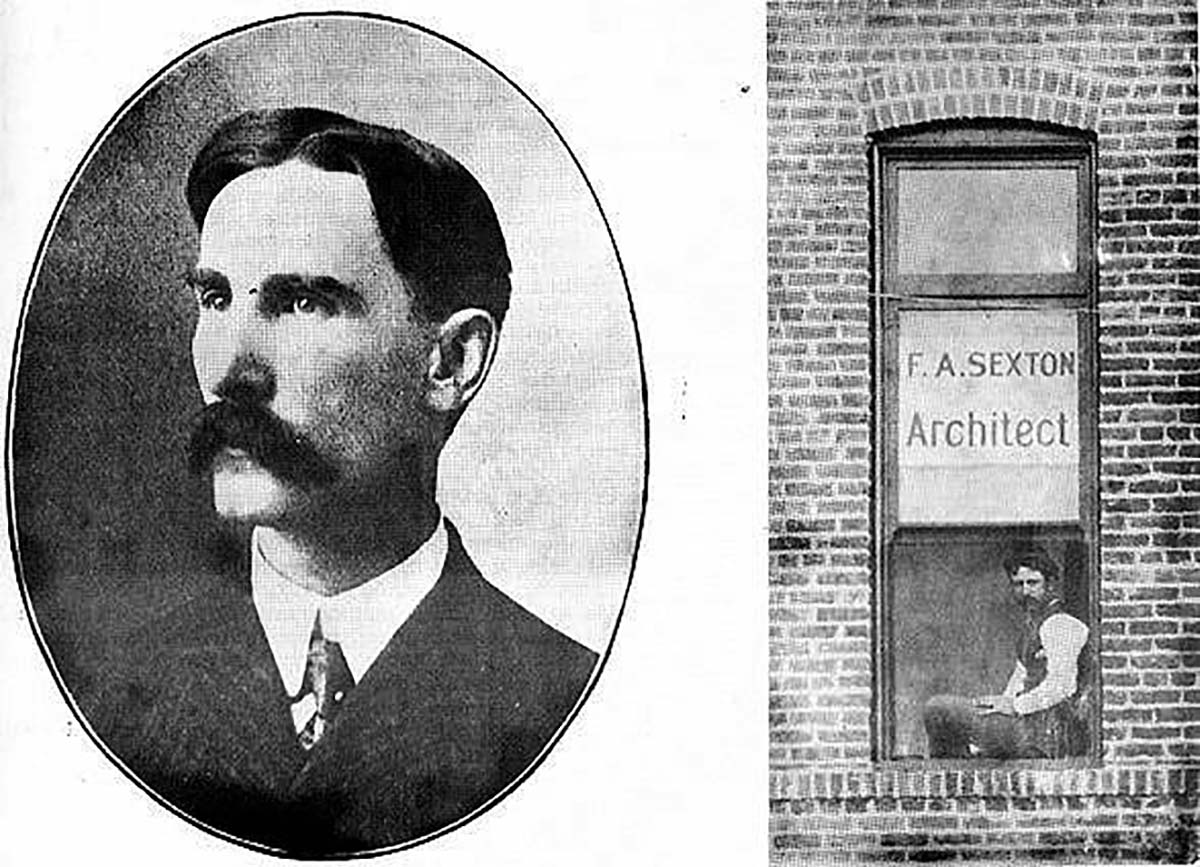-
Frederick Sexton House
2612 Harrison Avenue
Turn southbound on Harrison Avenue for half a block. On your way, you’ll pass this house:
2602 Harrison Ave – William W. Goldsborough House (1892): Architect Frederick Sexton. This house was built for Everett Herald foreman Goldsborough and Herald co-owner James N Bradley. The two stayed until 1895. It had a major remodel in 1973.
And then arrive at Sexton’s house.
2612 Harrison Avenue – Frederick Sexton House (1892): Architect Frederick Sexton. This house was designed by Riverside’s primary early architect Frederick Sexton for investor C. H. Boynton. Sexton himself lived here in 1900-1903.
Born in England in 1851, Sexton arrived in Illinois as a child of 8. He studied architecture in Chicago and Minneapolis. By 1889 he was in Tacoma, and Sexton arrived in Everett in the summer of 1891, living in a tent before many buildings had been erected in the new planned city. There are several of his designs featured on this tour.
His first large commission was Rudebeck Hall on Everett Avenue, followed quickly by the Rice-McFarland Building, and the Hotel Everett, all wooden structures long since gone.
In 1892-1893 Sexton designed several important schools. The Monroe School was Everett’s first brick school, a splendid assemblage of Romanesque and Byzantine elements, demolished after an earthquake in 1964. Other similarly impressive schools in Mukilteo, Marysville, and Lowell are also gone.
Sexton’s work reflected the exuberant spirit of the Riverside boom more than any other architect. Many of his buildings were conspicuously ornamented in a manner suggesting the Picturesque Eclecticism style which was popular a decade or two earlier. Over 130 of his designs have been identified, mostly on the U.S. West Coast.
When the Silver Panic of 1893 ended the 1890s boom, Sexton abandoned his family for an unsuccessful gold-hunting expedition to Africa. He returned to Everett at the turn of the century, but soon moved to Seattle, where he engaged in a successful practice for a dozen years. His many Seattle designs include the Parker-Fersen House near Volunteer Park. Upon retirement he moved to the Puyallup area, where he was a farmer until he died in May 1930.
Next door, at 2610 Harrison – Charles H. Boynton House, is a clone of the Sexton House and also designed by Sexton. Charles H. Boynton was an investor of the Everett Transportation Co. He was a New York-born newspaperman who later lived in Neenah, Wisconsin, where Henry Hewitt lived at one time.



